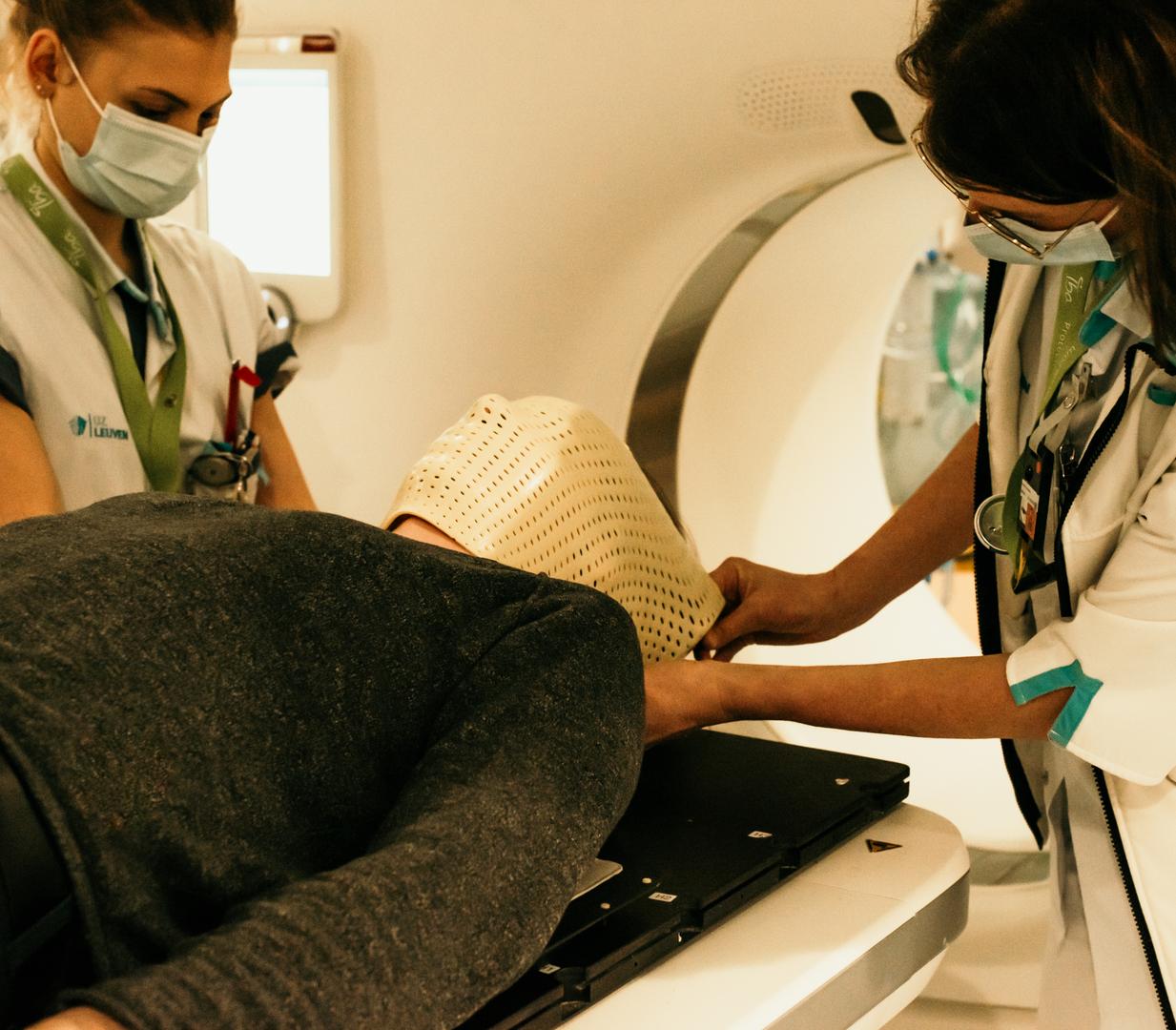How is a CT simulation performed?
- When you enter the CT-simulation room, we ask you to tell us your last name, first name, and date of birth.
- It is important that you lie on the treatment table in the exact same way for each radiotherapy session. The nurses and doctor will therefore first determine in which position you will be irradiated. The position chosen will be the most comfortable for you and the best for the treatment. The way you will be irradiated strongly depends on the location of the tumour.
- For patients irradiated on the chest, abdomen or limbs, we usually make a number of tattoo points. The nurse will apply the dots to your skin with a small puncture. Those dots are very small and disappear after about a year. The nurse lets you know in advance where they will be placed.
- For patients irradiated on the head or neck, an individual head support and irradiation mask will be made for the simulation. If this is the case for you, you will be given the necessary information. With a radiation mask, no annotations (lines) are made on the skin itself. The lines are applied to the mask instead. Sometimes, however, a tattoo point is placed as a directional point on the chest or abdomen.
- The duration of a simulation can vary from an hour to an hour and a half.
- If intravenous contrast fluid is administered, you must be sober. This will be discussed with you beforehand. You may not eat or drink anything for four hours beforehand, but you can take medication.
- At the end of the simulation, the nurse will give you your radiotherapy appointments (day and time) and the secretary's telephone number.
The radiation mask

If you will be irradiated on the head or neck, an individual irradiation mask will be made.
You lie on your back on the treatment table with your head and neck on a cushion that is specially designed for you. The radiotherapist-oncologist and nurses determine the position of your head and neck. The material for the mask is heated in a small oven so that it becomes flexible and can be modelled around your head and neck. The heat is well tolerated.
The mask does not stick to your skin or hair and can always be removed easily. Making the mask takes about half an hour.
The radiation mask and the headrest (pillow) are kept in the hospital during the entire treatment and are used only for you.
Treatment plan
Using these images and sophisticated computer software, the radiotherapist-oncologist and medical radiation physicist create an individual treatment plan. This plan determines (among other things) the number and direction of the proton beams needed to irradiate the tumour as accurately as possible and spare the surrounding healthy organs as much as possible.